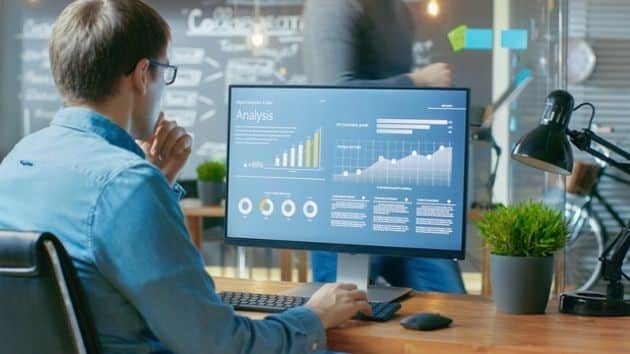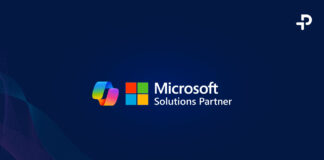Column: The pandemic and the changes at the workplace that came with it clearly underscore the need for a new kind of business model, states Laurence Dubois of the Prodware Group
The pandemic and the changes at the workplace that came with it clearly underscore the need for a new kind of business model. It is as if, and here is the irony, the all-technology has given rise to a need for more “humanity” - screens being the ultimate mode of communication between employees has made it even more crucial to factor in and reintroduce more human relations back into the workplace.
We are all headed in the same direction: that of emotion in the workplace. In this business model, emotions and care with a capital “c” are at the center of the equation.
However, what La Boétie says, “Liberty is the only joy upon which men do not seem to insist” is ever more relevant today. Because we have been away from the office for some time now, we got used to a sense of freedom, so to speak. And that remained true up until the moment when that “sense” of liberty came crashing down and we came back to our senses, our real senses, and realized that going to the office, engaging in the company culture, seeing people in person were aspects that spoke to our human nature.
That bit of introspection has led us to reconsider the way we engage with an organization. Once the vaccination drive over, we are theoretically supposed to head back to the office…business as usual. A reality that Executives, Managers, HR people are going to have to anticipate way ahead of time.
But how? Should we just call it remote “game over” and get everybody back to the office no questions asked? Should Corporate step in or do we need a new “back-to-the-office” policy? How do you bring people together like before in this “world after” time with a hybrid work mode, flexible hours and permeability?
“Too much of that Human Touch?”
While the vaccination campaign is ongoing full throttle, can we really believe that we will be reaching herd immunity and getting back to work just like before? That would be like brushing aside everything we have learned during more than a year of living under lockdown. Or even worse, it would be like being completely oblivious to the main ingredient of what makes up employee engagement: their emotions.
There is no ideal work mode to speak of, hybrid becoming the new normal. Has engagement been lost in the transition?
This is what we learn from the “Tomorrow at Work” survey conducted by Bodet Software on the impact of the sanitary crisis on the workplace. It dives into what the ideal workplace situation would be like with employees having their days filled with fast-moving projects, teamwork, flexibility with remote and on-site work modes…a bit of this and a bit of that, don’t you think? But how do you “reconnect” people together, create that sense of belonging, that sense of engagement throughout an organization in such circumstances? It is undoubtedly one of the toughest questions for companies today.
And what if we needed to circle back to the roots of employee engagement?
The feeling of isolation, the blurry boundaries between work/life balance are part of the downside of remote working. Whereas these areas were quite distinct before, they now closely overlap rendering the work methods and certainties of the past pretty hazy. What comes out of all of this is that need for a little “human touch.”
Several studies have made this observation and we now know for a fact that this collectivist culture phenomenon, akin to that of a tribal culture where individuals share the same values, challenges and geography, is not yet transposable online. It is therefore not surprising to see tons of management literature promoting employee-centricity at large flourish on the web.
So how do you come back to those basic and fundamental needs we seek as human beings, such as a sense of reality, emotional interaction and sharing? Do we do so by going back to living like prehistoric tribes using Zoom or Teams? Maybe it is time we rethink and come back to understanding what a company means?
Because it is “our project”
We all recall back in 2017, when presidential hopeful Emmanuel Macron addressed the French population calling on them to join forces with his movement called “La République en Marche” with a lot of gusto and almost losing his voice doing so. Political campaigns are life-size communication test labs. They have introduced what is called “phygital” rhetoric that could very well inspire companies. Are Company Executives, Managers and Human Resource Directors ready to hit the campaign trail?
Embodying your company’s program in phygital mode is what our project is all about.
Trying to foster that human touch through screens just does not cut it. No matter how much videoconferencing you do, staying in tune with people and trying to leverage some kind of group identity and team building is next to impossible.
However, this shoudn’t be a reason to give up on working toward building trust. Company Executives and Managers had to reinvent their tight-knit relationships by taking on, whenever called for, the roles of psychologist, mentor or simply a friend. By focusing on the psychological aspect of their employees, they get to have a close look into what drives their sense of engagement. During the lock down the barriers overlapped. Management became phygital and so did the company.
Driving engagement or knowing how to orchestrate a campaign from employee experience
First off by reintroducing the idea of the meaning of a company. How do you re-engage disengaged employees? How do you give a positive post-pandemic outlook to employees who do not see the light at the end of the tunnel? Well, re-establishing long-term thinking patterns with personal career development projects is something that works. Redefining the meaning and role of a company also makes sense.
Then leveraging new technologies as a lever for personal growth and not as a blocking point. “Ticket 109, PC X, low battery”, a typical day at work implies IT is always in the picture. Technology is an essential component of wellbeing at work.
It is even more true when working remotely. Being the initial communication channel, or working channel for most us, the computer screen conveys our degree of engagement, serving as a mirror of that engagement. In that sense, it can actually assist mangers in a phygital working environment.
Employee engagement does not answer to any specific business model per se – it is a business model by definition. The employees constitute the model of their company and it is up to the Human Resource Department and managers to heed the call of that engagement by providing what it takes to ensure they grow both professionally and as human beings.
Article initially published in ZDNET






